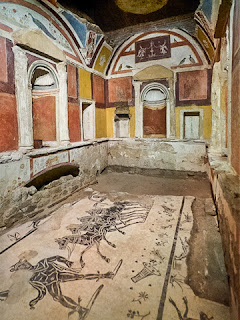Tuscany
Toscana is a region in Italy that
lies one-hundred and seventy miles north of Rome and overlooks the Tyrrhenian
Sea and backs up to the Apennine Mountains; it has a population close to four
million. It is the most visited region in Italy, and in the world. Upwards to
ten million people visit each year. Tuscany contains six localities designated
as World Heritage Sites. They are the
historical centers of Siena, San Gimignano, Pienza, and Florence (the capital
and the most visited locality within the region). The other two are the Leaning
Tower and Cathedral of Pisa, and Val d’Orcia, known for its landscape.
The region is the true birthplace
of the Italian Renaissance and a number of notable people in the arts and
sciences were born there. They are: Dante Allegheri, Francesco Petrarch, Sandro
Botticelli, Niccoló Macchiavelli, Luca Pacioli, Michelangelo di Lodovico
Buonarotti Simoni, and Giacomo Puccini. The region has several museums,
containing works of these great artists, scientists, and others. They are: the
Uffizi, the Palazzo Vecchio, the Pitti Palace, the Chianciano Museum of Art,
and the Academia di Belle Arti, where in the Tribuna stands the original statue
of David by Michelangelo. The region also contains many loggias, piazzas,
fountains, buildings, churches and cathedrals that are impressive works of art
and architecture.
When Italy became a country in
1861, one of its first tasks was to select a language, since the peninsula of
Italy consisted of many principalities, and autonomous regions, it did not have
a unifying language. They may all have derived from Latin but they were
dialects and not uniform. Thus, due to the impact of the arts and sciences
written and spoken in the Tuscan dialect, the new government selected it as the
national tongue. However, the full standardization of the Italian language
occurred in the decade of 1950-1960 with the rise of mass media and
television. Nevertheless, a modern
Italian can read the works of many of the great artist of the renaissance with
ease.
Tuscany is also famous for its wine
region of Chianti. Many wineries exist
throughout the area producing varied wines, some are Chianti, Chianti Classico,
and Vino Nobile di Montepulciano, Tenuto Tignanello, Barone Ricasoli ‘Brolio’
and Ruffino, some of these are blends of Sangiovese and Cabernet. It can’t go without mentioning that Tuscany
is famous for its cuisine too. Some
popular dishes are: crostini di fegato, liver paté on toast, ribollita, boiled
again vegetable soup with hard bread, panzanella, bread soaked in balsamic
vinegar topped with onions, tomatoes, basil, and olive oil. Another favorite
dish is fagioli con salsiccia, cannellini beans with sausage. An interesting
baking aspect is the Tuscans bake their bread senza sale, without salt.
Below are photographs of the statue of Perseus by Cellini and the Kidnapping of the Sabine Women by Giambologna (Jean Boulogne, a Flemish) that stand in the Loggia degli Lanzi in the Piazza della Signoria in Florence, and of David in the Academia di Belle Arti. For a gallery of photographs see www.florencepictures.com/historical-center/paiazzo-della-signoria-vecchio.







